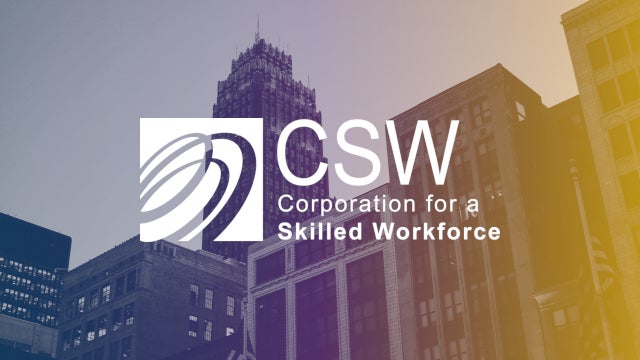Last week, President Trump met with 24 CEOs of manufacturing companies to discuss how to bring factory jobs back to America. This meeting echoed Trump’s economic policy from the campaign that focused on increasing the number of manufacturing jobs in the U.S.
As a component of an overall workforce strategy, this is, to be sure, a laudable goal. Manufacturing jobs on average provide better pay than the typical American job but require less formal education, making them important vehicles for greater opportunity and upward mobility. And the manufacturing sector is important to the economy: it represents 75 percent of economy-wide R&D, and provides an environment for innovation.
But federal, state, and local policymakers should not lose sight of the fact that sweeping changes are continuing to reshape the economy. Manufacturing jobs used to dominate the economic landscape, representing almost one in three jobs in 1955. But today, manufacturing jobs represent less than ten percent of total jobs in the economy.
While manufacturing jobs have decreased, we are experiencing a rise in temporary workers, on-call workers, contract company workers, and independent contractors or freelancers. A year ago, economists Larry Katz and Alan Krueger found that in just the last ten years, the percentage of the workforce engaged in these alternative work arrangements rose from 10.7 percent to 15.8 percent, which accounted for 94 percent of all net employment growth in that time period. The American Action Forum, in a paper published by the Future of Work Initiative, came to a similar finding.
This trend mirrors a broader trend in the economy: the traditional, stable employment relationship is being replaced by jobs with lower pay, fewer benefits, and less training investment. Our recent report, Toward a New Capitalism, explains what is happening.
- Technology and global competition have made it easier for businesses to outsource work rather than build and maintain productive capacity internally, allowing them to reduce costs, increase flexibility, and shift liabilities to contracting firms and the workers themselves.
- Capital markets and activist investors have accelerated this trend toward more contracting and outsourcing. As capital has become less “patient” – the average period of time stocks are owned before being resold fell from about eight years in the 1960’s to just four months by 2012 – companies are pressured to focus on short-term profits rather than long-run investments. A survey of 400 Chief Financial Officers found that a majority would avoid making an investment with a positive net present value if doing so would cause the company to fall short of its current quarterly consensus earnings.
These trends are impacting jobs across the economy, even in manufacturing: in the last 25 years, the share of frontline manufacturing production jobs employed by third party staffing agencies rose from 1 percent to 9 percent.
Moreover, as the report notes, these trends are not abating anytime soon, and could accelerate as technology makes it easier for businesses to avoid the traditional employment relationship entirely. Rather than try to turn back the clock, policymakers must examine innovative ideas to help workers and businesses adapt to the changing economy.
In A Policy Agenda to Restore the Promise of Work, the bipartisan Future of Work Initiative recommends two core strategies.
- First, we should make work a mutual enterprise by realigning incentives for workers and businesses. This can be accomplished in a number of ways. Training tax credits and other tax reforms can give businesses a greater stake in their workers, while tax incentives for worker ownership and work councils can give workers a greater stake in the businesses they work for. Corporate governance reforms can give businesses the freedom to invest in the long-term development of their workers. And better corporate disclosure and use of data can help match consumers, workers, and investors that care about worker-friendly practices with like-minded businesses.
- Second, we should empower workers by making them less reliant on businesses for benefits, security, and upward mobility. These policies options include – but are not limited to – portable benefits, a standardized and skills-based credentialing system, and unemployment insurance reform.
The nature of work in America is changing, but the policy response has not kept pace. With the right ideas, we can realign the relationship between businesses and workers, and in so doing, provide a much-needed update to the social contract that will ensure a brighter future for businesses and workers alike.

